-
 Variations in Gold Nanoparticle Size on DNA Damage: A Monte Carlo Study Based on a Multiple-Particle Model Using Electron Beams
Variations in Gold Nanoparticle Size on DNA Damage: A Monte Carlo Study Based on a Multiple-Particle Model Using Electron Beams -
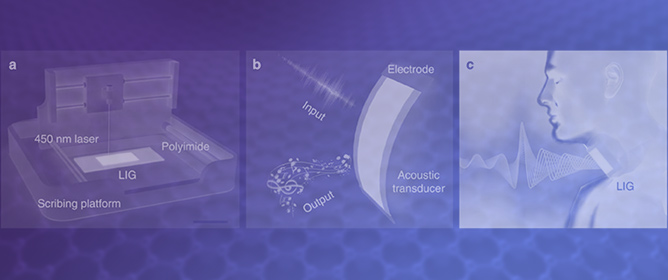 Laser-Induced Graphene for Multifunctional and Intelligent Wearable Systems
Laser-Induced Graphene for Multifunctional and Intelligent Wearable Systems -
 Transformative Technology for FLASH Radiation Therapy
Transformative Technology for FLASH Radiation Therapy -
 Petrographic and Chemical Characterization of the Frescoes by Saturnino Gatti (Central Italy, 15th Century)
Petrographic and Chemical Characterization of the Frescoes by Saturnino Gatti (Central Italy, 15th Century) -
 Effect of Cohesive Properties on Low-Velocity Impact Simulations of Woven Composite Shells
Effect of Cohesive Properties on Low-Velocity Impact Simulations of Woven Composite Shells
Journal Description
Applied Sciences
Applied Sciences
is an international, peer-reviewed, open access journal on all aspects of applied natural sciences published semimonthly online by MDPI.
- Open Access— free for readers, with article processing charges (APC) paid by authors or their institutions.
- High Visibility: indexed within Scopus, SCIE (Web of Science), Inspec, CAPlus / SciFinder, and other databases.
- Journal Rank: JCR - Q2 (Engineering, Multidisciplinary) / CiteScore - Q1 (General Engineering)
- Rapid Publication: manuscripts are peer-reviewed and a first decision is provided to authors approximately 15.8 days after submission; acceptance to publication is undertaken in 2.6 days (median values for papers published in this journal in the first half of 2023).
- Recognition of Reviewers: reviewers who provide timely, thorough peer-review reports receive vouchers entitling them to a discount on the APC of their next publication in any MDPI journal, in appreciation of the work done.
- Testimonials: See what our authors say about Applied Sciences.
- Companion journals for Applied Sciences include: Applied Nano, AppliedChem, Applied Biosciences, Virtual Worlds, Spectroscopy Journal and JETA.
Impact Factor:
2.7 (2022);
5-Year Impact Factor:
2.9 (2022)
Latest Articles
Smart Boxing Glove “RD α”: IMU Combined with Force Sensor for Highly Accurate Technique and Target Recognition Using Machine Learning
Appl. Sci. 2023, 13(16), 9073; https://doi.org/10.3390/app13169073 - 08 Aug 2023
Abstract
Emerging smart devices have gathered increasing popularity within the sports community, presenting a promising avenue for enhancing athletic performance. Among these, the Rise Dynamics Alpha (RD
Emerging smart devices have gathered increasing popularity within the sports community, presenting a promising avenue for enhancing athletic performance. Among these, the Rise Dynamics Alpha (RD
(This article belongs to the Special Issue Analytics in Sports Sciences: State of the Art and Future Directions)
Open AccessArticle
Research on the Quality Evaluation Method of Mobile Emergency Big Data Based on the Measure of Medium Truth Degree
Appl. Sci. 2023, 13(16), 9072; https://doi.org/10.3390/app13169072 - 08 Aug 2023
Abstract
Mobile emergency services are better able to meet the needs of frequent public emergencies; however, their data quality problems seriously affect decision-making. In order to reduce the interference of low-quality data and solve the problem of data quality ambiguity, this paper first summarizes
[...] Read more.
Mobile emergency services are better able to meet the needs of frequent public emergencies; however, their data quality problems seriously affect decision-making. In order to reduce the interference of low-quality data and solve the problem of data quality ambiguity, this paper first summarizes the five characteristics of mobile emergency big data. Second, based on the characteristics of mobile emergency big data, four data quality dimensions are defined with reference to existing research and national standards and combined with the measure of medium truth degree to give single-dimension and multi-dimension data quality truth degree measure models. Finally, a subjective-objective, qualitative-quantitative mobile emergency big data quality evaluation method based on the measure of medium truth degree is formed. The validity and practicality of the method are also verified by examples of algorithmic analysis of fire text datasets from Australian mountain fire data and the Chinese Emergency Incident Corpus. The experiments show that the method can realize quantitative mobile emergency big data quality assessment, solve the problem of data quality ambiguity, and reduce the interference of low-quality data, so as to save resources and improve the analysis and decision-making ability.
Full article
(This article belongs to the Special Issue Recent Advances in Big Data Analytics)
►▼
Show Figures
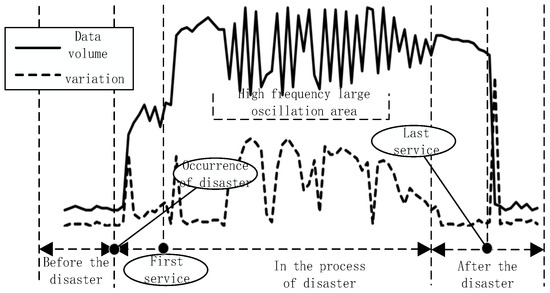
Figure 1
Open AccessEditorial
New Trends in Production and Operations Management
Appl. Sci. 2023, 13(16), 9071; https://doi.org/10.3390/app13169071 - 08 Aug 2023
Abstract
Operations Management includes the management of all company activities that support the input–output cycle [...]
Full article
(This article belongs to the Special Issue New Trends in Production and Operations Management)
Open AccessArticle
Using Modeling to Select the Type of Microwave Field Emitter for Dense-Layer Grain Dryers
Appl. Sci. 2023, 13(16), 9070; https://doi.org/10.3390/app13169070 - 08 Aug 2023
Abstract
The microwave field is used for drying and disinfecting grains during the pre-sowing seed treatment. The use of a microwave field in these installations leads to an increase in their productivity and a decrease in the energy consumed by them. In grain dryers,
[...] Read more.
The microwave field is used for drying and disinfecting grains during the pre-sowing seed treatment. The use of a microwave field in these installations leads to an increase in their productivity and a decrease in the energy consumed by them. In grain dryers, where the grain moves in a dense layer without being loosened, one of the challenges in using microwave fields is ensuring sufficient uniformity of the field distribution. In this article, waveguide design options that introduce microwave radiation into the grain layer are discussed. The objective of this study was to use application software to find the optimum type of transmitter from the three options presented. A mathematical simulation of the electromagnetic field distribution was performed with the use of CST Microwave Studio software 2019 in order to evaluate and compare horn-type, rectangular, and semicircular waveguides. The data on the standing wave ratio and radiation efficiency of these types of waveguides have been reported. The specific features of the microwave electromagnetic field distribution and radiation power in the output of these waveguides have been described. The results of mathematical simulations revealed that semicircular waveguides with slot-type radiators are preferable for processing dense grain layers.
Full article
(This article belongs to the Section Agricultural Science and Technology)
►▼
Show Figures
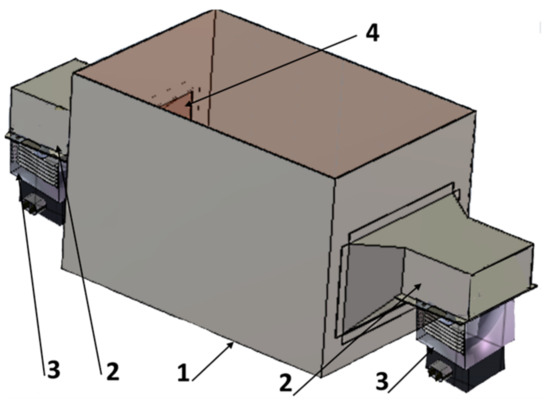
Figure 1
Open AccessArticle
The Effect of Combined Isometric and Plyometric Training Versus Contrast Strength Training on Physical Performance in Male Junior Handball Players
by
, , , , and
Appl. Sci. 2023, 13(16), 9069; https://doi.org/10.3390/app13169069 - 08 Aug 2023
Abstract
Exploring resistance training methods is crucial for optimizing performance programs. Isometric muscle actions have gained popularity in athletic training, but their impact on dynamic performance is uncertain. Isolated isometric actions also lack ecological validity. We compared the effects of 8-week combined isometric and
[...] Read more.
Exploring resistance training methods is crucial for optimizing performance programs. Isometric muscle actions have gained popularity in athletic training, but their impact on dynamic performance is uncertain. Isolated isometric actions also lack ecological validity. We compared the effects of 8-week combined isometric and plyometric (COMB) training and contrast strength training (CST) programs on junior male handball players. Thirty-six male first national division players (17.6 ± 1.0 years) were enrolled and randomly assigned to COMB, CST, or control (CONT) groups (all n = 12). Sprinting, change of direction, ball throwing velocity, jumping, and strength were assessed pre- and post-intervention. A significant group × time interaction was observed between the COMB and CONT groups for 20 and 30 m sprints (p ≤ 0.002) and between the COMB and CST groups (p ≤ 0.042). The COMB group had the largest improvements in change of direction and the modified T-test, with significant group × time interactions between the COMB and CONT groups (p ≤ 0.021). Significant group × time interactions were observed between the COMB and CST groups and between the COMB and CONT groups for 3 step running throw (p = 0.003; p < 0.001), running throw (p = 0.02; p = 0.031), and jumping throw (p = 0.001; p < 0.001). Countermovement jump showed a significant group × time interaction (p = 0.014), with the COMB group outperforming the other groups. Generally, COMB yielded larger improvements than CST. Coaches should consider incorporating a combination of isometric and plyometric exercises for in-season strength training.
Full article
(This article belongs to the Special Issue Sports Biomechanics Applied to Performance Optimization)
Open AccessReview
Technological Aspects and Potential Cutaneous Application of Wine Industry by-Products
by
, , , , , , and
Appl. Sci. 2023, 13(16), 9068; https://doi.org/10.3390/app13169068 - 08 Aug 2023
Abstract
The biomass of vinification results in up to 20% by-products (seeds, skins, pulp, and/or stems) that can be used in the production of diverse functional food, nutraceutical, pharmaceutical, and cosmetic ingredients, mainly due to their high polyphenol content. Conventional polyphenol extraction techniques are
[...] Read more.
The biomass of vinification results in up to 20% by-products (seeds, skins, pulp, and/or stems) that can be used in the production of diverse functional food, nutraceutical, pharmaceutical, and cosmetic ingredients, mainly due to their high polyphenol content. Conventional polyphenol extraction techniques are based on the use of solvents that are harmful to health and to the environment, creating a demand for sustainable complementary initiatives that mitigate part of the environmental effects and offer consumer safety. Current advances in these technologies allow for the recovery of valuable antioxidants from winemaking by-products free of hazardous solvents, biocompatible, and in compliance with international sustainable development guidelines. Nanotechnology has gained prominence in the development of green technologies to reduce or eliminate toxic agents and improve the stability and bioavailability of waste polyphenols. These efforts have led to the application of bioactive compounds from wine by-products in the development of more efficacious sunscreens, as a skin protection approach, and improvements in the antioxidant effectiveness of nanocarriers with potential use in the promotion of cutaneous health. We aimed to present different extraction and encapsulation technologies for biologically active compounds from wine by-products (Vitis vinifera L.). We also focused on a particular application of such compounds towards the development of value-added skin protection products aligned with a sustainable circular economy.
Full article
(This article belongs to the Section Green Sustainable Science and Technology)
Open AccessArticle
An Intelligent Approach to the Unit Nesting Problem of Coil Material
by
, , , , , , and
Appl. Sci. 2023, 13(16), 9067; https://doi.org/10.3390/app13169067 - 08 Aug 2023
Abstract
With the popularization of small batch production, the main cutting method for sheet metal parts has changed. Laser cutting has become the main production method for coil material cutting. Developing an irregular part nesting method for the continuous cutting of coil material is
[...] Read more.
With the popularization of small batch production, the main cutting method for sheet metal parts has changed. Laser cutting has become the main production method for coil material cutting. Developing an irregular part nesting method for the continuous cutting of coil material is urgent. Based on the coil material cutting process, this paper proposes an intelligent approach for the unit nesting problem of coil material. Firstly, a unit nesting model of coil material was constructed. Secondly, an intelligent approach using an improved marine predator algorithm was used to solve this model. In solving the model, the minimum nesting unit was continuously updated by changing the position, angle, and quantity of the nesting parts. Thirdly, the geometric characteristics of this minimum nesting unit were extracted. Finally, the nesting units for production were obtained using a single row or opposite row of the minimum nesting unit. The computational results and comparison prove that the presented approach is feasible and effective in improving material utilization, reducing production costs, and meeting the requirements of the production site.
Full article
(This article belongs to the Special Issue Advanced Manufacturing Technologies and Their Applications, Volume II)
►▼
Show Figures

Figure 1
Open AccessArticle
A Novel Gradient-Weighted Voting Approach for Classical and Fuzzy Circular Hough Transforms and Their Application in Medical Image Analysis—Case Study: Colonoscopy
by
and
Appl. Sci. 2023, 13(16), 9066; https://doi.org/10.3390/app13169066 - 08 Aug 2023
Abstract
Classical circular Hough transform was proven to be effective for some types of colorectal polyps. However, the polyps are very rarely perfectly circular, so some tolerance is needed, that can be ensured by applying fuzzy Hough transform instead of the classical one. In
[...] Read more.
Classical circular Hough transform was proven to be effective for some types of colorectal polyps. However, the polyps are very rarely perfectly circular, so some tolerance is needed, that can be ensured by applying fuzzy Hough transform instead of the classical one. In addition, the edge detection method, which is used as a preprocessing step of the Hough transforms, was changed from the generally used Canny method to Prewitt that detects fewer edge points outside of the polyp contours and also a smaller number of points to be transformed based on statistical data from three colonoscopy databases. According to the statistical study we performed, in the colonoscopy images the polyp contours usually belong to gradient domain of neither too large, nor too small gradients, though they can also have stronger or weaker segments. In order to prioritize the gradient domain typical for the polyps, a relative gradient-based thresholding as well as a gradient-weighted voting was introduced in this paper. For evaluating the improvement of the shape deviation tolerance of the classical and fuzzy Hough transforms, the maximum radial displacement and the average radius were used to characterize the roundness of the objects to be detected. The gradient thresholding proved to decrease the calculation time to less than 50% of the full Hough transforms, and the number of the resulting circles outside the polyp’s environment also decreased, especially for low resolution images.
Full article
(This article belongs to the Special Issue Computational Intelligence in Image and Video Analysis)
Open AccessArticle
A Semantic Framework for Decision Making in Forest Fire Emergencies
by
, , , , and
Appl. Sci. 2023, 13(16), 9065; https://doi.org/10.3390/app13169065 - 08 Aug 2023
Abstract
Forest fires can have devastating effects on the environment, communities, individuals, economy, and climate change in many countries. During a forest fire crisis, massive amounts of data, such as weather patterns and soil conditions, become available. Efficient management, intelligent integration, and processing the
[...] Read more.
Forest fires can have devastating effects on the environment, communities, individuals, economy, and climate change in many countries. During a forest fire crisis, massive amounts of data, such as weather patterns and soil conditions, become available. Efficient management, intelligent integration, and processing the available information in order to extract useful insights and knowledge to facilitate advanced whereas and support human operators and authorities in a real operational scenario is a challenge. In this work, we present ONTO-SAFE, an ontology-based framework for wildfire events, adopting Semantic Web technologies for data integration and infusion of domain and background knowledge. More specifically, the framework creates a unified representation of the available assets, taking into account data generated from different sources, such as sensors, weather forecasts, earth observations, etc. To this end, previously existing ontologies and standards are used, such as Empathi and EmergencyFire ontology, to provide the conceptual model and the necessary level of abstraction in the form of interconnected knowledge graphs to satisfy the modeling requirements. On top of the generated knowledge graphs, a declarative framework extracts facts and higher-level inferred knowledge from asserted data to support users in decision making. In addition, the framework supports the generation of recommendations, such as sharing important wildfire information with citizens and professionals, that can be adjusted based on user-defined factors and the current disaster risk management phase.
Full article
(This article belongs to the Topic Recent Advances and Technologies in Emergency Response, Security and Disaster Management Applications)
Open AccessArticle
Short-Term Net Load Forecasting for Regions with Distributed Photovoltaic Systems Based on Feature Reconstruction
Appl. Sci. 2023, 13(16), 9064; https://doi.org/10.3390/app13169064 - 08 Aug 2023
Abstract
Short-term load forecasting is the guarantee for the safe, stable, and economical operation of power systems. Deep learning methods have been proven effective in obtaining accurate forecasting results. However, in recent years, the large-scale integration of distributed photovoltaic systems (DPVS) has caused changes
[...] Read more.
Short-term load forecasting is the guarantee for the safe, stable, and economical operation of power systems. Deep learning methods have been proven effective in obtaining accurate forecasting results. However, in recent years, the large-scale integration of distributed photovoltaic systems (DPVS) has caused changes in load curve fluctuations. Current deep learning models generally train with historical load series and load-related meteorological data series as input features, which limits the model’s ability to recognize the load fluctuations caused by DPVS. In order to further improve the accuracy of load forecasting models, this paper proposes an input feature reconstruction method based on the maximum information coefficient (MIC). Firstly, the load curves with DPVS are classified by Gaussian mixture model (GMM) clustering. Then, considering the coupling relationship between the load and input features at different times, the load data and input features are reordered. Finally, the MIC between different features and loads at different times is calculated to select the relevant features at those different times and construct new input features. The case analysis shows that the feature reconstruction strategy proposed in this paper effectively improves the prediction performance of deep neural networks.
Full article
(This article belongs to the Topic Short-Term Load Forecasting)
►▼
Show Figures
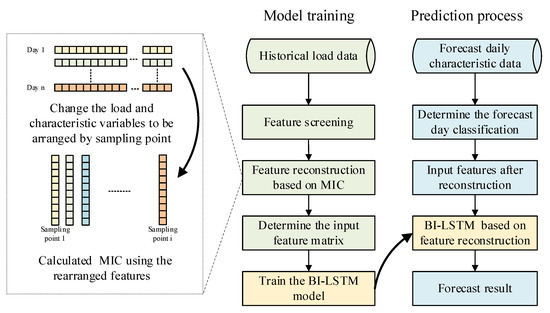
Figure 1
Open AccessArticle
A Study Utilizing Numerical Simulation and Experimental Analysis to Predict and Optimize Flange-Forming Force in Open-Die Forging of C45 Billet Tubes
Appl. Sci. 2023, 13(16), 9063; https://doi.org/10.3390/app13169063 - 08 Aug 2023
Abstract
Open-die forging holds a pivotal role in shaping machine parts within industrial applications. This study focuses on the assessment of stress–strain curves for C45 material at different elevated temperatures and strain rates through numerical simulations employing the finite element method (FEM). Specifically, the
[...] Read more.
Open-die forging holds a pivotal role in shaping machine parts within industrial applications. This study focuses on the assessment of stress–strain curves for C45 material at different elevated temperatures and strain rates through numerical simulations employing the finite element method (FEM). Specifically, the research investigates how the flow curve of materials at elevated temperatures and individual strain rates impacts the forming force during the flange forming of C45 billet tubes. By comparing the simulation results with experimental data on the flange-forming force, this study observes that optimal outcomes arise when considering both elevated temperature and strain rates in the flow curve of materials. The study then conducts simulations for C45 billet tubes with varying upsetting ratios (H0/D0), (S0/D0), and the punch’s pitch angle (α), aiming to address optimization challenges related to the flange-forming force. Consequently, a mathematical model is developed to represent the relationship between the flange-forming force and geometric parameters (H0/D0, S0/D0, and α). This model accurately predicts the forming force under various flange-forming conditions, demonstrating high precision with a maximum error of 4.26% compared with the experimental results. This study significantly contributes to the advancement of flange-forming technology in open-die forging through numerical simulation, enabling the optimization of the flange-forming force and the selection of appropriate equipment. These findings pave the way for more effective and efficient industrial processes, fostering innovation and progress in the field.
Full article
(This article belongs to the Section Mechanical Engineering)
►▼
Show Figures
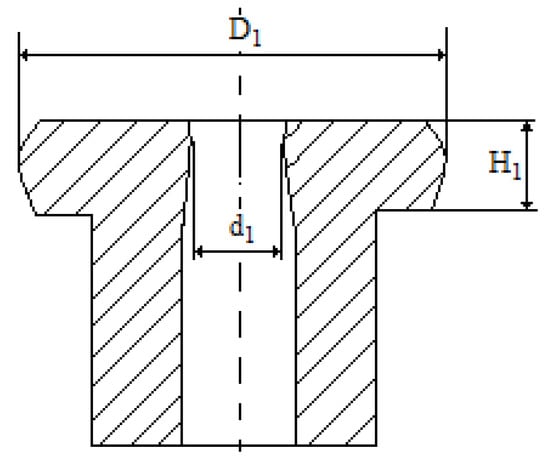
Figure 1
Open AccessArticle
Cross-Corpus Training Strategy for Speech Emotion Recognition Using Self-Supervised Representations
Appl. Sci. 2023, 13(16), 9062; https://doi.org/10.3390/app13169062 - 08 Aug 2023
Abstract
Speech Emotion Recognition (SER) plays a crucial role in applications involving human-machine interaction. However, the scarcity of suitable emotional speech datasets presents a major challenge for accurate SER systems. Deep Neural Network (DNN)-based solutions currently in use require substantial labelled data for successful
[...] Read more.
Speech Emotion Recognition (SER) plays a crucial role in applications involving human-machine interaction. However, the scarcity of suitable emotional speech datasets presents a major challenge for accurate SER systems. Deep Neural Network (DNN)-based solutions currently in use require substantial labelled data for successful training. Previous studies have proposed strategies to expand the training set in this framework by leveraging available emotion speech corpora. This paper assesses the impact of a cross-corpus training extension for a SER system using self-supervised (SS) representations, namely HuBERT and WavLM. The feasibility of training systems with just a few minutes of in-domain audio is also analyzed. The experimental results demonstrate that augmenting the training set with EmoDB (German), RAVDESS, and CREMA-D (English) datasets leads to improved SER accuracy on the IEMOCAP dataset. By combining a cross-corpus training extension and SS representations, state-of-the-art performance is achieved. These findings suggest that the cross-corpus strategy effectively addresses the scarcity of labelled data and enhances the performance of SER systems.
Full article
(This article belongs to the Special Issue IberSPEECH 2022: Speech and Language Technologies for Iberian Languages)
►▼
Show Figures

Figure 1
Open AccessArticle
Optimizing the Control Level Factors of an Ultrasonic Plastic Welding Machine Affecting the Durability of the Knots of Trawl Nets Using the Taguchi Experimental Method
Appl. Sci. 2023, 13(16), 9061; https://doi.org/10.3390/app13169061 - 08 Aug 2023
Abstract
►▼
Show Figures
Ultrasonic welding is a high-frequency method of welding that uses mechanical energy to generate heat. This is a clean welding method and very suitable for plastic welding. In this study, using the Taguchi experimental method, the control factors of an ultrasonic plastic welding
[...] Read more.
Ultrasonic welding is a high-frequency method of welding that uses mechanical energy to generate heat. This is a clean welding method and very suitable for plastic welding. In this study, using the Taguchi experimental method, the control factors of an ultrasonic plastic welding machine were optimized to affect the durability of knots of trawl nets made from polyamide (PA) and polypropylene (PP) filaments as an alternative to the traditional mesh knitting method. After optimization, the PA knots had an amplitude of 32 µm (34%), a welding pressure of 2.5 kg/cm2 (41%), a hold time of 0.35 s (24%), and a speed of 5.5 mm/s (1%). The knots made of PP filament had relatively stable strength after optimization, with an amplitude of 36 µm (25%), a welding pressure of 2.0 kg/cm2 (22%), a hold time of 0.25 s (16%), and a speed of 6.0 mm/s (37%). Finally, validation experiments were conducted to verify the results obtained in this study.
Full article

Figure 1
Open AccessArticle
Development of In Situ Refrigeration Cycle Measurement Method Using Air-Side Data of Air Source Heat Pump
Appl. Sci. 2023, 13(16), 9060; https://doi.org/10.3390/app13169060 - 08 Aug 2023
Abstract
The refrigeration cycle of an air source heat pump system is an important information that reveals critical operating data, such as the cooling capacity, power consumption, and performance of a system during operation. Operating data, such as refrigerant pressure and enthalpy in situ,
[...] Read more.
The refrigeration cycle of an air source heat pump system is an important information that reveals critical operating data, such as the cooling capacity, power consumption, and performance of a system during operation. Operating data, such as refrigerant pressure and enthalpy in situ, can be difficult to measure. Therefore, this study developed an in situ refrigeration cycle measurement method using the airside data of an air source heat pump. A method for measuring the refrigeration cycle is proposed using the characteristics of evaporation, compression, condensation, and expansion processes. The distance function was analyzed by normalizing the difference between the refrigerant pressure and enthalpy of the existing and proposed measurement methods. In addition, the distance function for the maximum error of the pressure and enthalpy measurement devices was analyzed and compared with the distance function of the entire data used in the evaluation. All the evaluation data had low distance function values with a maximum difference of 5%, confirming the reliability of the proposed refrigeration cycle measurement method. The power consumption and calculated COP were also evaluated using the proposed method. The Mean Bias Error (MBE) of power consumption and COP were 0.15% and 0.04%, and the coefficient of variation of root-mean-square error (CvRMSE) was 8.967% and 7.14%, respectively.
Full article
(This article belongs to the Special Issue Control Methods for Energy Efficiency Technologies in Buildings)
►▼
Show Figures

Figure 1
Open AccessArticle
Human Activity Recognition Method Based on Edge Computing-Assisted and GRU Deep Learning Network
Appl. Sci. 2023, 13(16), 9059; https://doi.org/10.3390/app13169059 - 08 Aug 2023
Abstract
Human Activity Recognition (HAR) has been proven to be effective in various healthcare and telemonitoring applications. Current HAR methods, especially deep learning, are extensively employed owing to their exceptional recognition capabilities. However, in pursuit of enhancing feature expression abilities, deep learning often introduces
[...] Read more.
Human Activity Recognition (HAR) has been proven to be effective in various healthcare and telemonitoring applications. Current HAR methods, especially deep learning, are extensively employed owing to their exceptional recognition capabilities. However, in pursuit of enhancing feature expression abilities, deep learning often introduces a trade-off by increasing Time complexity. Moreover, the intricate nature of human activity data poses a challenge as it can lead to a notable decrease in recognition accuracy when affected by additional noise. These aspects will significantly impair recognition performance. To advance this field further, we present a HAR method based on an edge-computing-assisted and GRU deep-learning network. We initially proposed a model for edge computing to optimize the energy consumption and processing time of wearable devices. This model transmits HAR data to edge-computable nodes, deploys analytical models on edge servers for remote training, and returns results to wearable devices for processing. Then, we introduced an initial convolution method to preprocess large amounts of training data more effectively. To this end, an attention mechanism was integrated into the network structure to enhance the analysis of confusing data and improve the accuracy of action classification. Our results demonstrated that the proposed approach achieved an average accuracy of 85.4% on the 200 difficult-to-identify HAR data, which outperforms the Recurrent Neural Network (RNN) method’s accuracy of 77.1%. The experimental results showcase the efficacy of the proposed method and offer valuable insights for the future application of HAR.
Full article
(This article belongs to the Special Issue Novel Approaches for Human Activity Recognition)
►▼
Show Figures
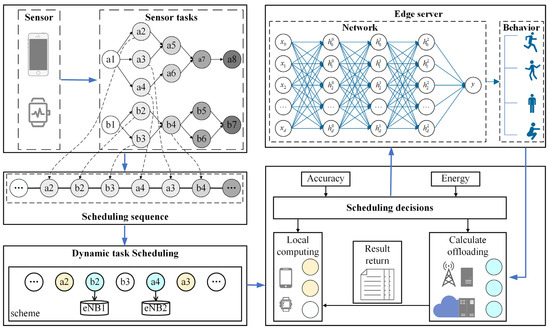
Figure 1
Open AccessArticle
Parametric Study on the Aerodynamic Characteristics of Wind Guide Barriers for a Train–Bridge System
Appl. Sci. 2023, 13(16), 9058; https://doi.org/10.3390/app13169058 - 08 Aug 2023
Abstract
This paper presents a new type of wind guide barrier (WGB). Through wind tunnel experiments, the key parameters of three types of WGB were studied, as well as their effects on the aerodynamic characteristics of a high-speed train and blunt body box girder
[...] Read more.
This paper presents a new type of wind guide barrier (WGB). Through wind tunnel experiments, the key parameters of three types of WGB were studied, as well as their effects on the aerodynamic characteristics of a high-speed train and blunt body box girder system, while the bridge deck wind field was investigated. The results show that the shielding effect is the main factor affecting the windproof performance of the WGB. When the WGB is installed, the mean wind pressure distribution on the train is comparable to that of using a vertical wind barrier while reducing barrier resistance and the resistance of the bridge–barrier system. At the same time, the WGB can guide the oncoming flow, resulting in an increase in the streamwise and vertical wind velocity ratios on the bridge deck, as well as an increase in the maximum aerodynamic coefficient on the train.
Full article
(This article belongs to the Section Civil Engineering)
►▼
Show Figures

Figure 1
Open AccessArticle
A Distributed Intelligent Lighting Control System Based on Deep Reinforcement Learning
Appl. Sci. 2023, 13(16), 9057; https://doi.org/10.3390/app13169057 - 08 Aug 2023
Abstract
With the rapid development of human society, people’s requirements for lighting are also increasing. The amount of energy consumed by lighting systems in buildings is increasing, but most current lighting systems are inefficient and provide insufficient light comfort. Therefore, this paper proposes an
[...] Read more.
With the rapid development of human society, people’s requirements for lighting are also increasing. The amount of energy consumed by lighting systems in buildings is increasing, but most current lighting systems are inefficient and provide insufficient light comfort. Therefore, this paper proposes an intelligent lighting control system based on a distributed architecture, incorporating a dynamic shading system for adjusting the interior lighting environment. The system comprises two subsystems: lighting and shading. The shading subsystem utilizes fuzzy control logic to control lighting based on the room’s temperature and illumination, thereby achieving rapid control with fewer calculations. The lighting subsystem employs a Deep Deterministic Policy Gradient (DDPG) algorithm to optimize the luminaire dimming problem based on room illuminance in order to maximize user convenience while achieving uniform illumination. This paper also includes the construction of a prototype box on which the system is evaluated in two distinct circumstances. The results of the tests demonstrate that the system functions properly, has stability and real-time performance, and can adapt to complex and variable outdoor environments. The maximum relative error between actual and expected illuminance is less than 10%, and the average relative error is less than 5% when achieving uniform illuminance.
Full article
(This article belongs to the Topic Smart Electric Energy in Buildings)
►▼
Show Figures
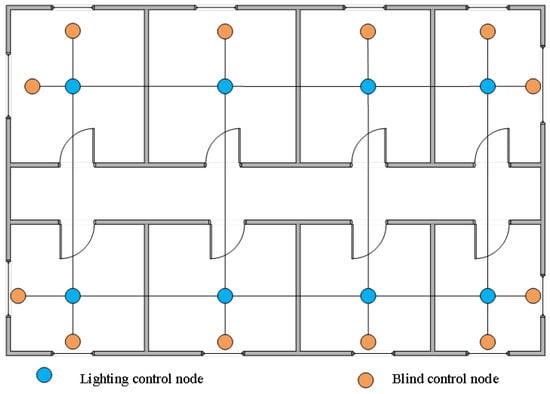
Figure 1
Open AccessArticle
APIASO: A Novel API Call Obfuscation Technique Based on Address Space Obscurity
Appl. Sci. 2023, 13(16), 9056; https://doi.org/10.3390/app13169056 - 08 Aug 2023
Abstract
API calls are programming interfaces used by applications. When it is difficult for an analyst to perform a direct reverse analysis of a program, the API provides an important basis for analyzing the behavior and functionality of the program. API address spaces are
[...] Read more.
API calls are programming interfaces used by applications. When it is difficult for an analyst to perform a direct reverse analysis of a program, the API provides an important basis for analyzing the behavior and functionality of the program. API address spaces are essential for analysts to identify API call information, and therefore API call obfuscation is used as a protection strategy to prevent analysts from obtaining call information from API address spaces. API call obfuscation avoids direct API calls and aims to create a more complex API calling process. Unfortunately, current API call obfuscation methods are not effective in preventing analysts from obtaining usable information from the API address space. To solve this issue, in this paper, we propose an API call obfuscation model based on address space obscurity. The key functions within the API are encrypted and moved to the user code space for execution. This breaks the relationship between the API and its address space, making it impossible for analysts to obtain address information about a known API from the API address space. In our experiments, we developed an archetypical compiler-level API call obfuscation system to automate the obfuscation of input source code into an obfuscated file. The results show that our approach can thwart existing API deobfuscation techniques and is highly resistant to various open-source dynamic analysis platforms. Compared to other obfuscation techniques, our scheme improves API address space obscurity by more than two times, the detection rate of deobfuscation techniques such as Scylla, etc. is zero, and the increase in obfuscation overhead is not more than 20%. The above results show that APIASO has better obfuscation effect and practicability.
Full article
(This article belongs to the Special Issue Cryptography and Information Security)
►▼
Show Figures

Figure 1
Open AccessArticle
Automatic Detection of Inconsistencies and Hierarchical Topic Classification for Open-Domain Chatbots
by
, , , and
Appl. Sci. 2023, 13(16), 9055; https://doi.org/10.3390/app13169055 - 08 Aug 2023
Abstract
Current State-of-the-Art (SotA) chatbots are able to produce high-quality sentences, handling different conversation topics and larger interaction times. Unfortunately, the generated responses depend greatly on the data on which they have been trained, the specific dialogue history and current turn used for guiding
[...] Read more.
Current State-of-the-Art (SotA) chatbots are able to produce high-quality sentences, handling different conversation topics and larger interaction times. Unfortunately, the generated responses depend greatly on the data on which they have been trained, the specific dialogue history and current turn used for guiding the response, the internal decoding mechanisms, and ranking strategies, among others. Therefore, it may happen that for semantically similar questions asked by users, the chatbot may provide a different answer, which can be considered as a form of hallucination or producing confusion in long-term interactions. In this research paper, we propose a novel methodology consisting of two main phases: (a) hierarchical automatic detection of topics and subtopics in dialogue interactions using a zero-shot learning approach, and (b) detecting inconsistent answers using k-means and the Silhouette coefficient. To evaluate the efficacy of topic and subtopic detection, we use a subset of the DailyDialog dataset and real dialogue interactions gathered during the Alexa Socialbot Grand Challenge 5 (SGC5). The proposed approach enables the detection of up to 18 different topics and 102 subtopics. For the purpose of detecting inconsistencies, we manually generate multiple paraphrased questions and employ several pre-trained SotA chatbot models to generate responses. Our experimental results demonstrate a weighted F-1 value of 0.34 for topic detection, a weighted F-1 value of 0.78 for subtopic detection in DailyDialog, then 81% and 62% accuracy for topic and subtopic classification in SGC5, respectively. Finally, to predict the number of different responses, we obtained a mean squared error (MSE) of 3.4 when testing smaller generative models and 4.9 in recent large language models.
Full article
(This article belongs to the Special Issue IberSPEECH 2022: Speech and Language Technologies for Iberian Languages)
►▼
Show Figures

Figure 1
Open AccessEditorial
Polymer Surface Treatments for Drug Delivery and Wound Healing
by
Appl. Sci. 2023, 13(16), 9054; https://doi.org/10.3390/app13169054 - 08 Aug 2023
Abstract
Nanomedicine is a cutting-edge field at the intersection of nanotechnology and medicine that has experienced significant advancements in recent decades [...]
Full article
(This article belongs to the Special Issue Polymer Surface Treatments for Drug Delivery and Wound Healing)

Journal Menu
► ▼ Journal Menu-
- Applied Sciences Home
- Aims & Scope
- Editorial Board
- Reviewer Board
- Topical Advisory Panel
- Instructions for Authors
- Special Issues
- Topics
- Sections & Collections
- Article Processing Charge
- Indexing & Archiving
- Editor’s Choice Articles
- Most Cited & Viewed
- Journal Statistics
- Journal History
- Journal Awards
- Society Collaborations
- Conferences
- Editorial Office
Journal Browser
► ▼ Journal BrowserHighly Accessed Articles
Latest Books
E-Mail Alert
News
Topics
Topic in
Applied Sciences, Biomedicines, BioMedInformatics, Data, Life
Machine Learning Techniques Driven Medicine Analysis
Topic Editors: Chunhua Su, Celestine Iwendi, Thippa Reddy Gadekallu, Keping YuDeadline: 10 August 2023
Topic in
Applied Sciences, Sensors, Electronics, Photonics, JSAN
Machine Learning in Communication Systems and Networks
Topic Editors: Yichuang Sun, Haeyoung Lee, Oluyomi SimpsonDeadline: 20 August 2023
Topic in
Applied Sciences, Drones, Energies, Machines, Materials, Sensors
Design, Simulation and New Applications of Unmanned Aerial Vehicles
Topic Editors: Andrzej Łukaszewicz, Wojciech Giernacki, Zbigniew Kulesza, Jaroslaw Alexander Pytka, Andriy HolovatyyDeadline: 31 August 2023
Topic in
Applied Sciences, Coatings, JMMP, Materials, Metals
Welding and Joining of Materials in Off-shore and Energy Industry
Topic Editors: Dariusz Fydrych, Jacek Tomków, Aleksandra Świerczyńska, Grzegorz Rogalski, Sergey G. Parshin, Chandan Pandey, Michał Landowski, Hamed Aghajani Derazkola, Thomas HasselDeadline: 15 September 2023

Conferences
27 October–10 November 2023
The 4th International Electronic Conference on Applied Sciences (ASEC2023)

Special Issues
Special Issue in
Applied Sciences
Advances in Fusion Engineering and Design
Guest Editor: Arkady SerikovDeadline: 10 August 2023
Special Issue in
Applied Sciences
Advances in Building Materials and Concrete
Guest Editors: Sara Cattaneo, Manuela Alessandra ScamardoDeadline: 20 August 2023
Special Issue in
Applied Sciences
Diagnostic Methodology and Sensors Technologies
Guest Editors: Mario De Cesare, Marilena Musto, Giuseppe Rotondo, Umberto GaliettiDeadline: 31 August 2023
Special Issue in
Applied Sciences
Real-Time Diagnosis Algorithms in Biomedical Applications and Decision Support Tools
Guest Editor: Alfredo RosadoDeadline: 16 September 2023
Topical Collections
Topical Collection in
Applied Sciences
Deep Vision Algorithms and Applications
Collection Editors: Byung-Gyu Kim, Partha Pratim Roy
Topical Collection in
Applied Sciences
Structural Dynamics and Aeroelasticity
Collection Editors: Sergio Ricci, Paolo Mantegazza, Alessandro De Gaspari, Jonathan E. Cooper, Afzal Suleman, Hector Climent
Topical Collection in
Applied Sciences
Distributed Energy Systems
Collection Editor: Rodolfo Dufo-López
Topical Collection in
Applied Sciences
Intelligent Transportation Systems II: Beyond Intelligent Vehicles
Collection Editors: Javier Alonso Ruiz, Jeroen Ploeg, Angel Llamazares, Noelia Hernández Parra, Carlota Salinas, Rubén Izquierdo







.jpg)






